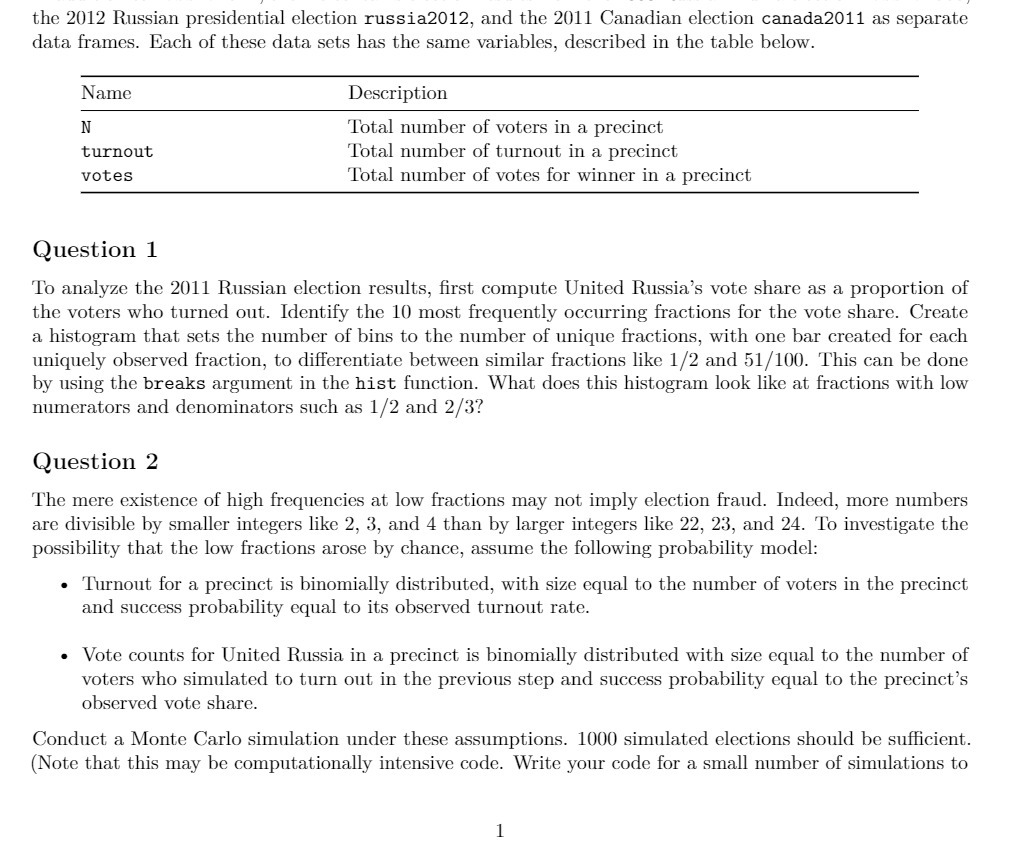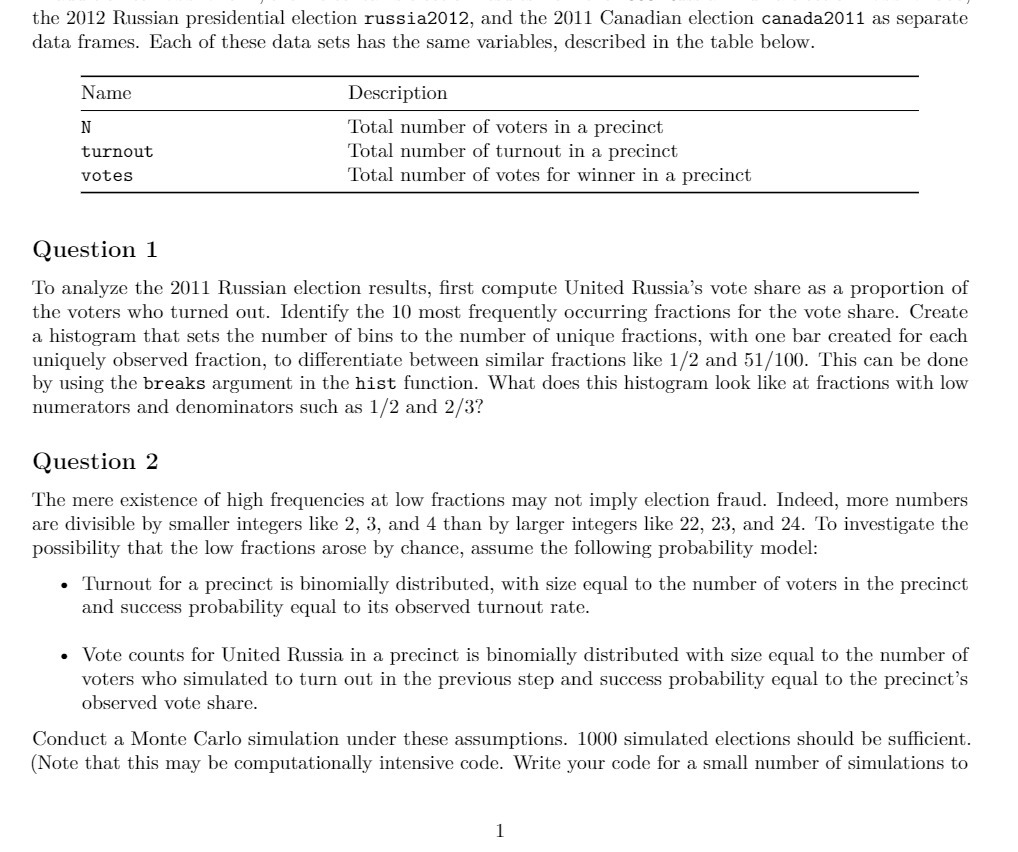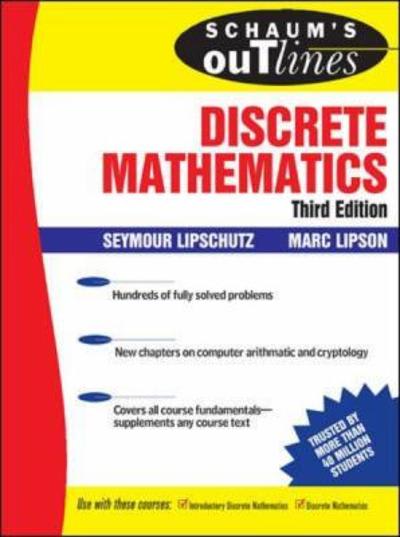Answered step by step
Verified Expert Solution
Question
1 Approved Answer
.I the 2012 Russian presidential election russia2012, and the 2011 Canadian election canada2011 as separate data frames. Each of these data sets has the same


Step by Step Solution
There are 3 Steps involved in it
Step: 1

Get Instant Access to Expert-Tailored Solutions
See step-by-step solutions with expert insights and AI powered tools for academic success
Step: 2

Step: 3

Ace Your Homework with AI
Get the answers you need in no time with our AI-driven, step-by-step assistance
Get Started


